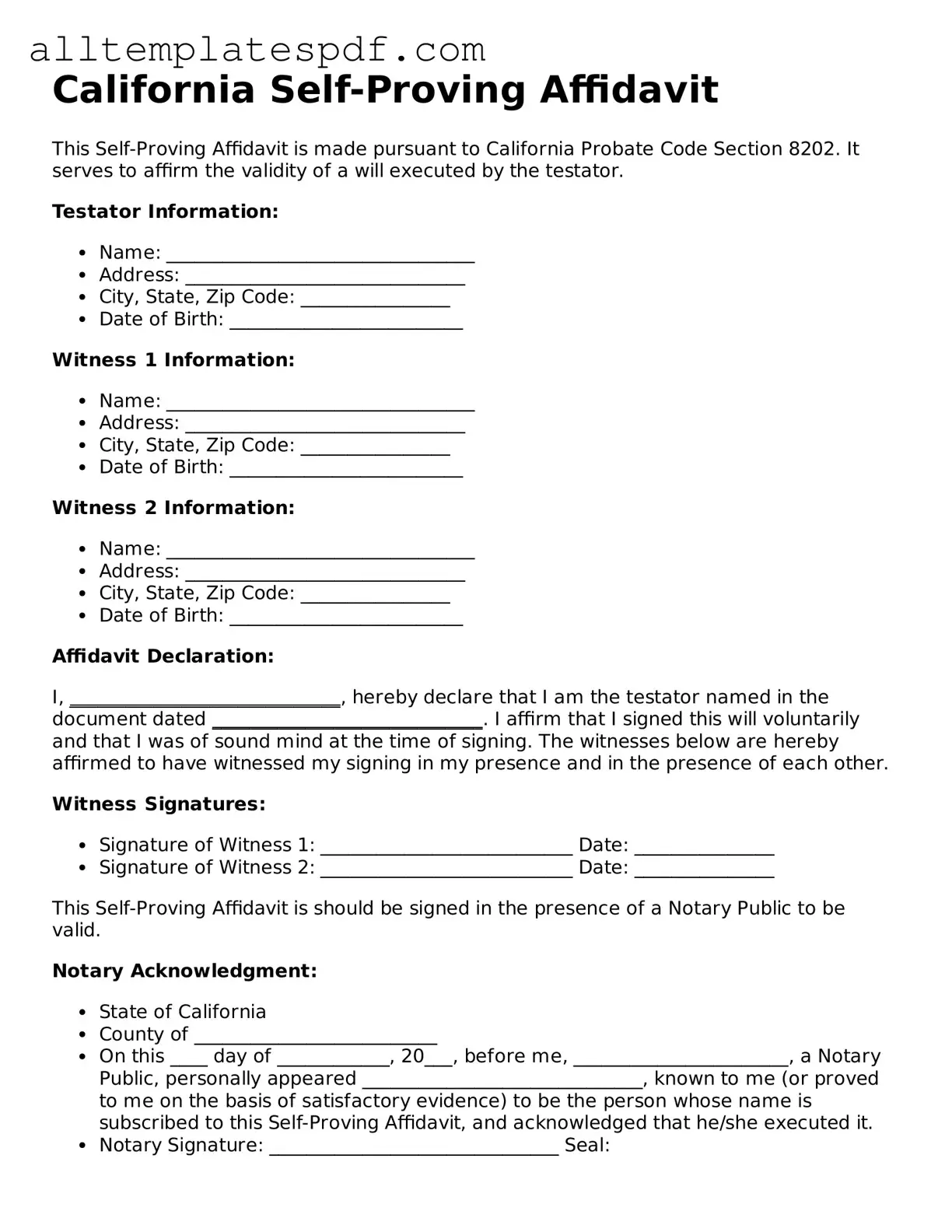Completing the California Self-Proving Affidavit form can be a straightforward process, but several common mistakes often lead to complications. One prevalent error occurs when individuals fail to provide accurate information about the testator. It is essential to ensure that the name, date of birth, and address are correctly stated. Any discrepancies may raise questions about the validity of the affidavit.
Another frequent oversight involves the signatures. The affidavit requires the signatures of both the testator and the witnesses. If either signature is missing, the document may be deemed incomplete. It is crucial to double-check that all required parties have signed the form in the appropriate places.
Many people also neglect to include the date when the affidavit is signed. This detail is vital, as it establishes the timeline of events related to the will. Without this date, it may be challenging to ascertain the order of actions taken, which could lead to disputes later on.
In addition, some individuals do not fully understand the purpose of the affidavit. The Self-Proving Affidavit serves as a way to validate the will without the need for witnesses to appear in court. If the form is not filled out with this understanding, essential elements may be omitted, undermining its effectiveness.
Another common mistake is failing to have the affidavit notarized. A notary public must witness the signing of the affidavit to ensure its authenticity. Without this crucial step, the affidavit may not hold up in legal proceedings, potentially complicating the probate process.
Furthermore, individuals sometimes use outdated versions of the form. It is important to ensure that the most current version of the California Self-Proving Affidavit is being utilized. Legal forms can change, and using an obsolete version could lead to complications or even rejection of the document.
Lastly, people often overlook the importance of reviewing the entire document before submission. A final review can help catch any errors or omissions that may have been missed during the initial completion. Taking this extra step can save time and prevent future issues in the probate process.
